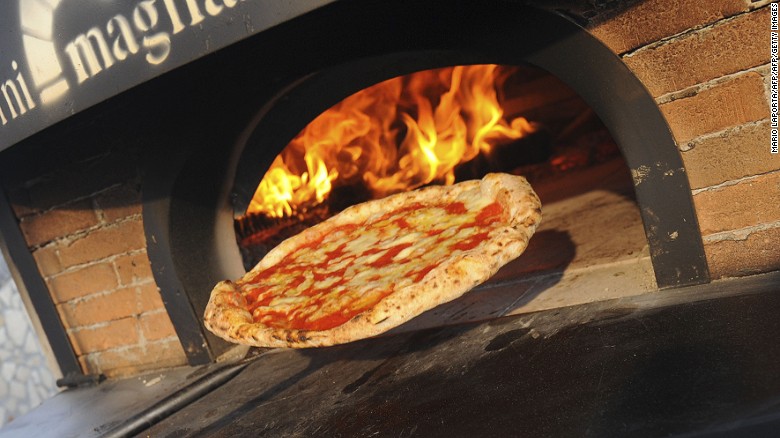(CNN) -
Pizza is healthy.
And it is not healthy.
Depending on the type of crust, the amount of cheese, and the toppings used, pizza can rank anywhere from nutritionally decent to a diet disaster.
Even healthy pizzas provide a good amount of sodium from tomato sauce and cheese, so if you're cutting back on salt, you should eat with caution.
Of course, the size of the slice and the number of slices you eat also count.
Pros of pizza include the fact that it offers calcium from cheese and lycopene from tomatoes, which helps fight disease.
And pizza crust made with whole wheat flour (including white whole wheat flour) is healthier than regular white crust, offering whole grains and fiber and digesting more slowly than refined grains.
But what you put on your pizza can significantly affect its nutritional value.
Ingredients such as pepperoni, sausage, and extra cheese can increase saturated fat, sodium, and calories, while slices with thinner crusts and topped with vegetables tend to be lower in calories, saturated fat, and sodium.
For example, a large piece
of Pizza Hut's
Thin 'N Crispy Veggie Lovers Pizza
has 240 calories, 4 grams of saturated fat, and 710 milligrams of sodium.
However, a large serving of the
Meat Lovers Pan Pizza
chain
with pepperoni, sausage, ham, bacon, pork and beef has 480 calories, 10 grams of saturated fat and 1,180 milligrams of sodium.
advertising
Frozen pizzas can be a convenient dinner, but they can also vary in terms of ingredients and nutritional value, especially the amount of sodium, so it's important to read labels carefully (some contain small amounts of trans fat).
Dairy-free and gluten-free pizzas are available, but as with their traditional counterparts, whether they are healthy or not depends on the ingredients as well.
When it comes to kids and pizza, a recent study concluded that pizza consumption among children and teens was associated with higher daily calorie intake and higher intake of saturated fat and sodium.
The study also found that when pizza is eaten as a snack or from fast food restaurants, it has a greater negative impact on calorie intake.
Pizza eaten in schools did not significantly affect children's calorie intake, probably because it may not be nutritionally different from other dishes in school, according to the study authors.
If you enjoy pizza regularly, try making it at home using healthier ingredients, such as whole wheat English muffins, part-skim mozzarella cheese, and tomato sauce with no added salt.
And don't forget to put a lot of veggies on it;
the more colorful the better.
Editor's Note:
This note was initially published in May 2017 and updated in July 2021.
StudiesingredientsPizzaHealthyVegetables










/cloudfront-eu-central-1.images.arcpublishing.com/prisa/KMEYMJKESBAZBE4MRBAM4TGHIQ.jpg)


